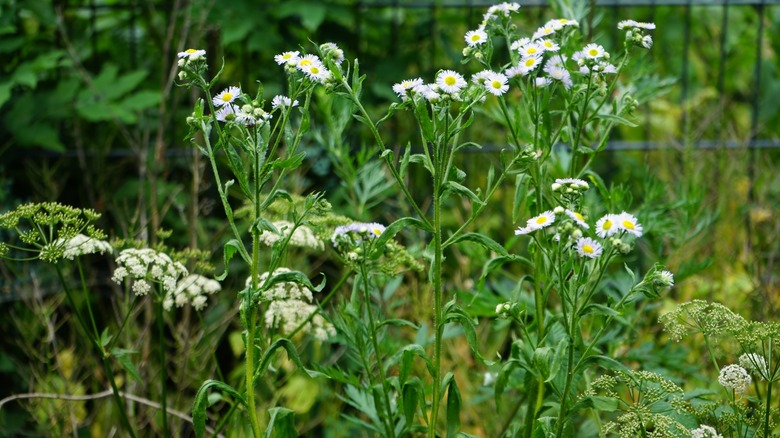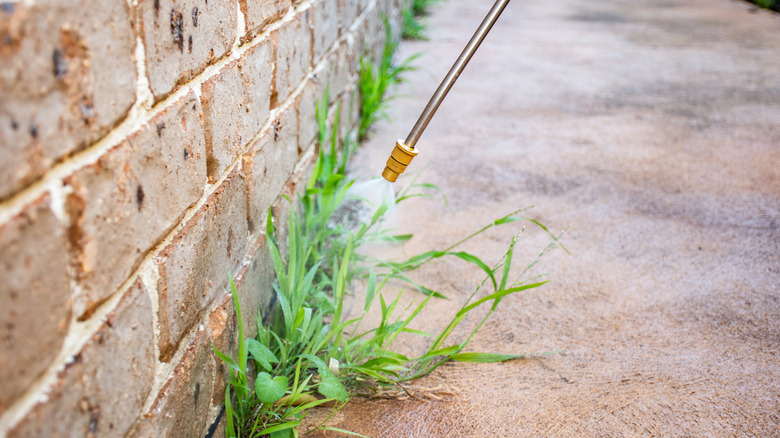When fleabane emerges, its white and yellow flowers, resembling tiny daisies, can look quite pretty. You may even think you forgot about planting some flowers in the area. However, it’s essential to learn how to control fleabane, which, contrary to its name, has nothing to do with eliminating fleas in your lawn. Instead, this weed will spread, allowing its course and fibrous leaves, which can pinch when touched, to take over an area rather quickly.
To control fleabane, you can certainly remove them one by one, but the right type of herbicide can also be helpful. Whenever possible, treat this weed as soon as you see it emerge, as treating it becomes harder to do as it grows. Without pulling out the entire root system, it will simply come back. So, the best treatment is prevention. You can and should treat areas with herbicide where there’s a risk for fleabane to develop in the spring months, though it can begin to sprout up at any time during the growing season. Prevention steps will minimize the spread of the weed’s seeds, giving you a leg up on controlling that spread. After a few treatments, this weed will no longer be a prickly problem in your yard.
How to identify fleabane in your garden

Many years ago, gardeners would plant fleabane, not for the flowers but for the belief that it would better control fleas in the yard. Today, it’s more common for it to spread from other yards, especially those that aren’t well-kept. Fleabane tends to show up in early spring with light green foliage that looks more like succulent leaves than blades of grass. Typically, the leaves are in a rosette-like pattern, and some varieties have daisy-like blooms.
These weeds will grow quickly and can even grow back if mowed over. They can reach as high as 5 feet if left untouched. Usually, as the stems grow, the very top portion will bend over due to the weight of the flower head, creating what is known as a Shepard’s hook. The stems and clusters of flowers can have a thicker appearance with a bit of a fringe along the edges, which causes them to have a prickly sensation when touched.
If this is the type of weed you have in your lawn or garden, it’s best to remove it as it can germinate quickly, allowing other flowers to form throughout the lawn as the wind carries the seeds. Weeds like fleabane thrive even in bad soil with enough nutrients and water; they can take over the area quickly if left untouched.
How to control fleabane in your lawn

Though fleabane isn’t a risk for most people or animals, and it’s a good way to attract pollinators, it is still an important weed to control as it will rob the soil of nutrients your grass needs. There are several steps you can take to bring this weed under control. Start with some prevention. An opportunistic weed, fleabane will spread when there is an opportunity to, such as areas of thin grass growing. Keep your grass thick to minimize any ability for weeds to move into the area. Overseeding your lawn is a good way to do that.
It also helps to use weed control on the fleabane if it’s already there. You can find various herbicides to help with this, including those that contain 2,4-D, 2,4-DP, and MCPA ingredients. When using any product like this, always follow the instructions provided by the manufacturer and use protective gear to keep yourself safe. Keep animals out of any area you’ve treated as well. Fleabane is a difficult weed to treat because of the thickness of the stem and the robust quality of the plant. Make sure to mow the grass often to keep germination to a minimum. Also, pull these weeds out by hand to help limit the spread. Just make sure to use gloves, grab the base of the weed plant, and pull upright to remove the root.



